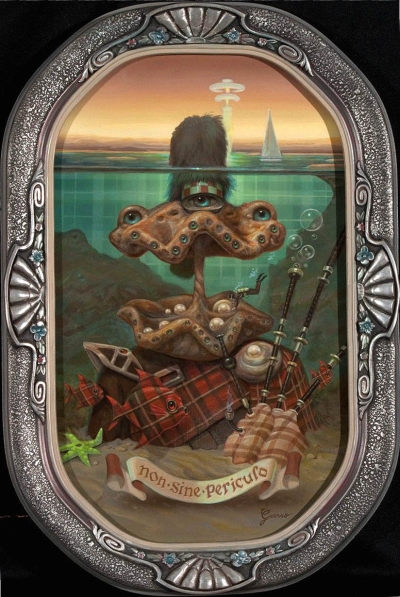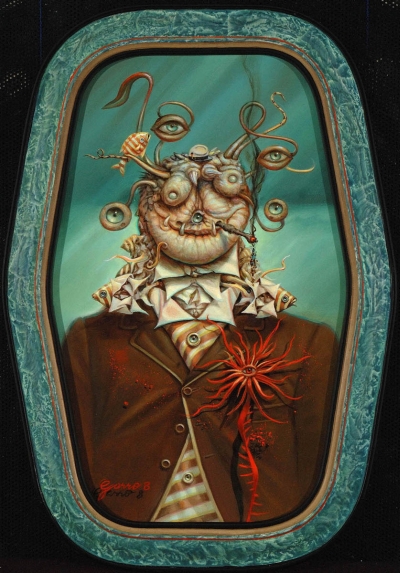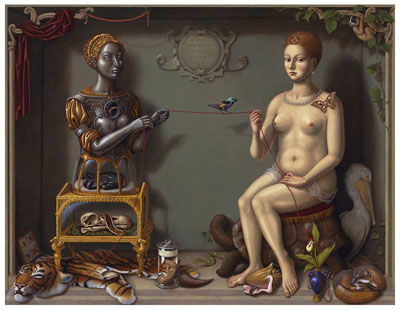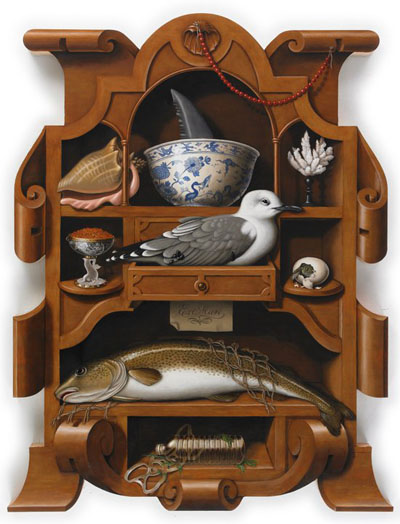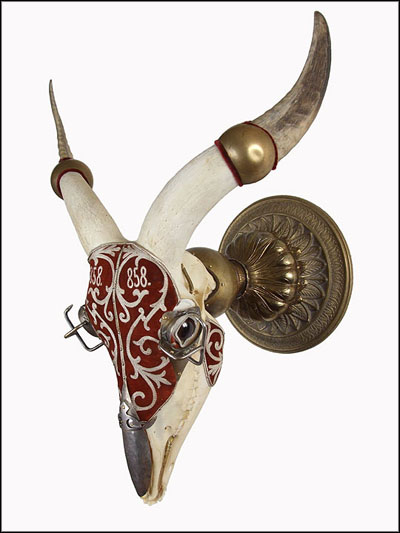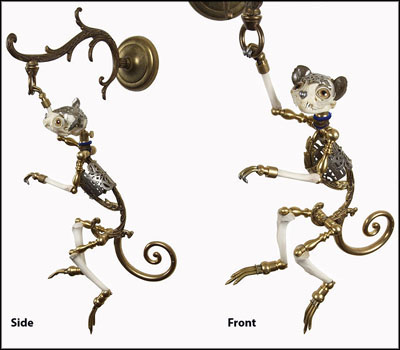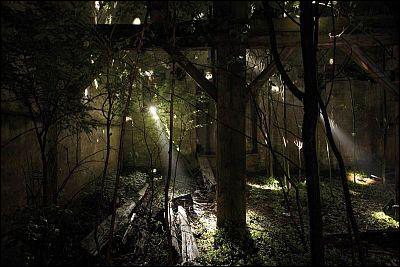A preface for the unfamiliar, potentially aghast reader: the English Victorian taxidermist Walter Potter was, according to all accounts, a gentle and kindhearted man. (Read more about him here, and here.) All the animals Potter used in his work were said to have died of natural causes. Apparently, he never harmed any creature presented in his displays. Rather, he arranged to take carcasses off the hands of a local farm and veterinarian. Additionally, as his reputation grew, the community he lived in began to donate expired critters.

Bride from “Kitten’s Wedding”
Today, many perceive his elaborate anthropomorphic dioramas –featuring various dead animals: kittens, puppies, rabbits, ducks, squirrels, frogs, etc, imitating domestic human life– as grotesque, but bear in mind that at the time they were made, and for many decades following, the creatures in Potter’s vast collection were well-admired as an elegant source of “Victorian whimsy”.
Long after Potter’s death, crowds still came to view his thousands of creatures at the Potter Museum in Bramber, Sussex, England. (Then, later, at Cornwall’s Jamaica Inn.) However, sensibilities change. By the end of the 20th century, fewer and fewer devotees were making the pilgrimage to see Potter’s body of, well, bodies. The vast collection was finally dismantled and sold off in bits and pieces in 2003, to a wide array of buyers, for roughly £500,000.

“Rabbit and Hen”
“It caused outrage when John and Wendy Watts split up and sold the historic dioramas. […] Artist Damien Hirst, a huge fan of Walter Potter’s work, said he would have paid £1 million to keep the collection together.” Now, eight years later, many of the pieces have been reassembled in an exhibition at the Museum of Everything in Primrose Hill, London. Co-curators James Brett and Peter Blake did their best to retrieve as many of the dioramas back on loan as they could. Opening today, the gallery showing includes several of Potter’s most famous pieces: “The Death of Cock Robin,” The House that Jack Built”, and “Happy Families”.
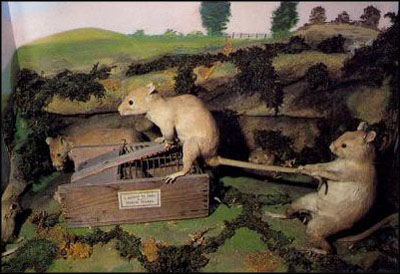
“A Friend In Need”
Unsqueamish Coilhouse readers in the UK/Europe, don’t miss this rare opportunity to see Potter’s fascinating work in person! (It runs through December.) Please be sure to report back. Several more images after the jump.






